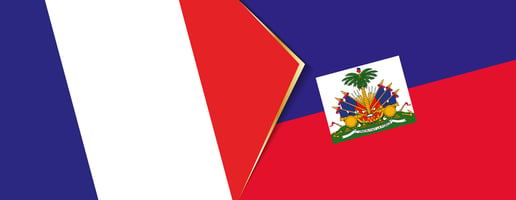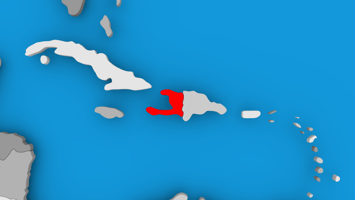A client recently asked me about the difference between French and Haitian Creole. Her Haitian...
Connecting with Communities: Exploring the Diverse World of Creole Languages
Creole languages are a fascinating linguistic phenomenon that developed over time due to various historical events and cultural exchanges. However, it's important to note that Creole is not a single language but rather a group of distinct languages that have developed independently in different parts of the world. In this article, we will explore the origins, diversity, and importance of creole languages and provide tips to translation buyers on choosing the correct translation service depending on the specific creole-speaking community they want to reach.
Understanding that different creole languages have distinct origins and unique linguistic features is crucial. For example, Haitian Creole and Cape Verdean Creole are two distinct creole languages that have evolved separately and are not mutually intelligible. Therefore, it's essential to determine which specific creole-speaking community you are looking to reach before choosing a translation service. This will help ensure your materials are accurately translated into the appropriate creole language and effectively communicate your message to your target audience.
What is a creole Language?
A creole language is a stable and natural language that develops from a mixture of different languages, usually due to colonization, slavery, or trade. Creole languages are often influenced by the languages that contributed to their development and the cultures and traditions of the people who speak them. They usually begin as a simplified form of a pidgin language and gradually develop into a distinct language with its own grammar, vocabulary, and pronunciation.
The Origins of Creole Languages
Creole languages have developed in different parts of the world, with their origins rooted in various historical events and cultural exchanges. Some factors contributing to the development of creole languages include colonization, slavery, trade, and migration. Here are some examples of historical events that have led to the development of creole languages:
Haitian Creole: Developed in Haiti during French colonization, Haitian Creole is a blend of French, African, and other languages. It began as a pidgin language used by enslaved Africans and French colonizers and evolved into a distinct creole language. Today, it is the official language of Haiti and is spoken by around 12 million people worldwide.
Haitian Creole has its own unique alphabet and writing system. The Haitian Creole Academy (Akademi Kreyòl Ayisyen), which was founded by the Haitian government to standardize the language and develop its written form, has been instrumental in promoting the use of Haitian Creole in education, media, and government, and in preserving the language's unique cultural identity. Its role is to promote and defend the use of Haitian Creole in all aspects of society and to develop the language's vocabulary, grammar, and spelling.
Haitian Creole is vital to Haiti's cultural heritage and national identity. As one of the world's most widely spoken creole languages, it is becoming increasingly important for communication and commerce, particularly in the United States where significant Haitian communities exist in states such as Florida, New York, Massachusetts, and New Jersey.
Gullah : Spoken by around 250,000 people, Gullah is a creole language that evolved from contact between English-speaking colonizers and enslaved Africans in the coastal regions of South Carolina, Georgia, and northeastern Florida. The Gullah people are descendants of West and Central Africans who were brought to the United States as slaves during the transatlantic slave trade.
It is worth noting that Gullah is not a dialect of English, but a distinct language with its own grammar, vocabulary, and syntax. It has roots in African languages and includes influences from English, and other languages spoken in the region. It has indirectly influenced the vocabulary of the American South and has contributed to traditional Southern speech patterns.
Gullah is considered an endangered language due to the declining number of speakers. Efforts are being made to preserve Gullah and its cultural heritage, including the creation of Gullah language programs in schools and universities, and the establishment of cultural institutions such as the Gullah Geechee Cultural Heritage Corridor. The Gullah language is an important part of African American culture and history. Its preservation is crucial for maintaining the cultural identity of Gullah people and their contributions to American society.
Cape Verdean Creole: Another fascinating creole language, Cape Verdean Creole was developed in Cape Verde, a group of islands off the coast of West Africa. It is a blend of Portuguese and African languages, and its grammar and vocabulary are influenced by these languages. With around 1 million speakers in Cape Verde and Cape Verdean communities in other parts of the world, Cape Verdean Creole is an important language for cultural identity and communication.
In the United States, Cape Verdean Creole is primarily spoken in Massachusetts and Rhode Island, where there are sizable Cape Verdean communities. The city of New Bedford in Massachusetts has the highest concentration of Cape Verdean Creole speakers in the country, and the city of Pawtucket in Rhode Island also has a significant Cape Verdean population. These communities have contributed to the rich cultural heritage of the United States and have helped to preserve the unique linguistic and cultural identity of Cape Verdean Creole.

Unique Features of Creole Languages
Creole languages have unique features that set them apart from their source languages. Some of the notable features of creole languages include:
- Simplified grammar - Creole languages typically have a simplified grammar compared to their source languages. This is because they develop as pidgin languages, which are simpler forms of communication used by people who do not share a common language.
- Mixed vocabulary - Creole languages typically have a vocabulary that is derived from their source languages, but they also incorporate words from other languages spoken in the community. This results in a unique mix of words that reflect the diverse cultural influences on the language.
- Distinct pronunciation - Creole languages often have distinct pronunciations compared to their source languages. This is because they may have developed in a community where speakers have different accents and dialects.
- Unique alphabets - Creole languages may use the same alphabet as their source languages or may have developed their own unique alphabet or writing system.
Here is a comparison table for some of the notable creole languages:
|
Language |
Origin |
Location |
Vocabulary |
|
Haitian Creole |
French, African, Taino and other languages |
Haiti |
French and African vocabulary |
|
Gullah |
English, African languages and other languages |
Coastal areas of the Southeastern United States |
English and African vocabulary |
|
Cape Verdean Creole |
Portuguese, African languages and other languages |
Cape Verde islands |
Portuguese and African vocabulary |
|
Mauritian Creole |
French, African, Indian, Chinese and other languages |
Mauritius |
French, African, Indian, and Chinese vocabulary |
|
Tok Pisin |
English, Melanesian languages, and other languages |
Papua New Guinea |
English and Melanesian vocabulary |
These languages have unique histories and are spoken in diverse regions, each with their own cultural significance and contributions to language development. By understanding the unique features of each creole language, individuals and businesses can better navigate their communities' language and cultural barriers.
The importance of Creole Languages
Creole languages are becoming increasingly important for communication and commerce. In the United States, for example, Haitian Creole is becoming more critical for businesses and organizations that serve Haitian communities. According to the American Community Survey (ACS) conducted by the US Census Bureau in 2019, there were an estimated 1.2 million Haitians in the United States. Translating materials into Haitian Creole can help businesses better serve this community and tap into new markets.
Moreover, translation in Haitian Creole is essential for compliance with language access laws. Language access laws are regulations that require certain entities to provide language assistance services to limited English-proficient individuals. These laws ensure that individuals with limited English proficiency have equal access to essential services and information, such as medical care, legal assistance, and government benefits.
In the United States, some of the key language access laws include:
- Title VI of the Civil Rights Act of 1964 prohibits discrimination based on race, color, or national origin in programs and activities that receive federal financial assistance. This includes providing language assistance services to limited English-proficient individuals accessing these programs and activities.
- Executive Order 13166 requires federal agencies to provide meaningful access to their programs and activities for limited English proficient individuals by developing and implementing a plan to provide language assistance services.
- Americans with Disabilities Act requires that entities providing services to the public ensure that communication with individuals with disabilities is as effective as communication with others. This includes providing appropriate auxiliary aids and services, such as qualified interpreters and translated materials.
How to Identify the Right Creole Language
When targeting creole-speaking communities, it's important to remember that creole is not a single language but rather a group of languages that have developed independently in different parts of the world. Each creole language has unique features, vocabulary, and grammar, making it crucial to identify the appropriate creole language for your target audience.
For instance, if you want to expand your business or organization's reach in the Haitian community, consider translating your materials into Haitian Creole, the official language of Haiti spoken by around 12 million people. However, if your target audience is the Cape Verdean community, translating your materials into Cape Verdean Creole is essential to connect with this community.
By choosing to translate your materials into the appropriate creole language, you'll be able to better connect with your target audience, demonstrate a commitment to language access and cultural understanding, and expand your reach in diverse communities. Contact a professional translation service specializing in the creole language of your target audience, like Creole Solutions, to ensure accurate and culturally appropriate translations that meet your needs.




